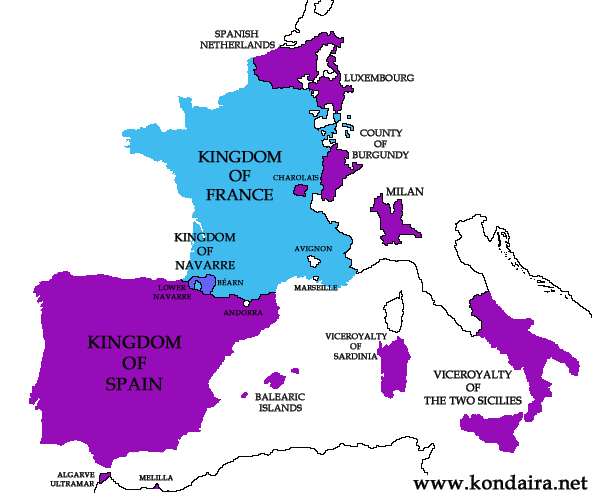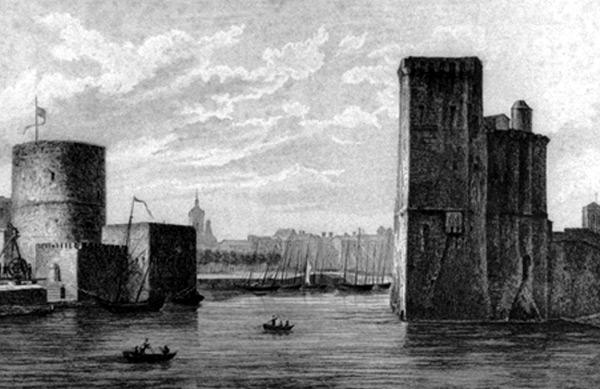Sometimes called 'Mary of Hungary', it's easy to lose this Mary among the sea of other famous Mary's hailing from Austria and Hungary, not to mention the rest of Europe. This particular Mary was a master stateswoman, and arguably one of the most important politicians of her time. A member of the powerful Habsburg dynasty, and a contemporary of Henry VIII, Mary saved part of Hungary for her family after an Ottoman invasion, and governed the Netherlands for decades, suppressing rebellions, attempting to make peace with France. Though she is largely unknown today, she was a key political figure during her lifetime.
The daughter of Philip the Handsome and Joanna the Mad, Mary was born in Brussels in 1505. She had five siblings, four older, the most notable being her brothers Charles and Ferdinand, both of whom later became Holy Roman Emperors.
About six months after her birth, Mary was engaged to the yet unborn heir of King Ladisla of Hungary. Thankfully, the presumed heir did materialize in the form of her future husband, Louis, was later born in 1506. The two were officially 'married' when Mary was nine, but they lived separately until 1522.
Prior to cohabiting with her husband, Mary was given a humanist education along with her sisters, Isabella and Eleanor, and her twice over sister in law, Anne of Bohemia. Young Mary was passionate about music as well as sport. There also must have been some introduction to philosophy, because she later became enamored of the scholar Erasmus.
When Mary moved to Buda in 1522 she was immediately coronated Queen of Hungary. Louis' father had had his son crowned while he was still alive in order to secure the succession. Ladislaw died in 1516, and Louis had been inexpertly ruling since the year before. When Mary arrived on the scene, Louis soon delegated running the country to her, and instead spent his time hunting and partying.
Though Mary was only 15, she took to ruling like a fish to water. Renaissance Hungary was a mess, nobles fought each other and the crown incessantly, and the country was only ever a few steps away from anarchical collapse. Mary brokered peace between different noble families, and tried to inspire loyalty to her husband the King.
Unfortunately, Mary's efforts were too little, too late. When Suleiman I invaded in 1526 the nobility were unable to unify under the common cause of not being conquered by the Ottomans. Louis died in combat, leaving Mary a widow.
The couple were reportedly in love, but they had no children. This isn't entirely unexpected, the pair were 15 and 14 upon marriage, and they were only married for five years. However, this lack of an heir would make things difficult in Hungary after Louis' death. Though the Ottomans had taken Hungary, they hadn't gotten all of Hungary. Hungary was split into three--a third to the Ottomans, a third to the pretender John Zapolya, and a third went to Mary's brother Ferdinand.
Mary wrote to Ferdinand telling him about her sudden widowhood, and his sudden possession of a new country. He asked her to remain on as regent, a position that she only reluctantly accepted, protesting that the job should go to someone older and more experienced. Mary served as regent for more than a year until Ferdinand was coronated in 1527.
It is worth noting Mary's protests that she was unsuitable for the role of regent because of her age and inexperience. This is a pattern that would occur throughout her life when dealing with her male relatives. As governor of the Netherlands, she would frequently ask permission to resign, citing her inability to fully do her duty due to her gender, age, or lack of abilities. On the surface, it merely seems that Mary maybe struggled with self esteem, and the amount of reassuring letters her brother wrote to her certainly support this theory. However, it is also worth noting that in this first case, as well as most other cases of attempted resignation, Mary's attempt to resign came on the tail of her brothers denying her the basic things she needed to rule. It seems more likely that her shy projection of self doubt was merely her way of manipulating men who wanted results, but weren't willing to give her the necessary ingredients for success.
After leaving Hungary, Mary floated aimlessly until being appointed governor of the Netherlands after the death of Margaret of Austria in 1531. At the time, the Netherlands were a part of the vast and growing Habsburg Empire, ruled by Mary's brother, Charles V. The Netherlands was a notoriously tricky region, populated by a testy and nepotistic nobility, a wealthy and discontented bourgeois, and outer provinces that most definitely did not want to be under Habsburg rule. Add in the ever growing threat of Reformation, and the Netherlands was a hot seat of discontent.
The Reformation was a particular problem for Mary, because she frequently flirted with Lutheranism, much to the disapproval of her staunchly Catholic brothers. While Queen of Hungary, Mary had employed several reformist preachers, and read books by Martin Luther. It seemed likely that she may have had evangelical leanings herself, but when she took up as governor she became, at least publicly, staunchly Catholic.
She was, however, very tolerant of the protestants in the Netherlands. Charles frequently had to remind her to enforce anti-protestant laws, and the Netherlands was known as a place where protestant missionaries could preach without a huge amount of risk.
It was here in the Netherlands that Mary's master diplomatic and political acumen really shone. The role of governor was chronically underfunded in the Netherlands, and had only a limited number of patronages assigned to it. To control the area Mary needed both money and patronages¹, both of which were controlled by her brother Charles, who was so disinterested in the region, that he left the answering of her letters up to his secretary. Through a combination of persistent pestering and attempted resignations, Mary was able to not only get Charles to answer her letters, but also get him to allow her discretion over the dispensal of every third patronage.
Though she won the patronage issue, Mary still struggled against Charles and his neglect of the region. An inability to balance the state budget and increased tensions with France caused a rebellion to break out in 1537. Mary kept her head, and was eventually able to suppress the rebellion, but not without great difficulty.
War was particularly difficult for Mary because her generals refused to listen to or communicate with her. Mary encountered a great deal of misogyny in her capacity as governor and regent, which made her job infinitely more difficult than it would have been for a man. Officials refused to listen to her, and nobles consistently disobeyed her orders. This, along with a great dislike of her nephew Philip (who had just replaced his father), and protest of her age, led to her retirement in 1555
After she left the Netherlands, Mary went to Castille, her mother's homeland. She accompanied her sister Eleanor, intending to spend the rest of her days happy and away from politics. Unfortunately, Eleanor died in 1558, setting Mary adrift. Charles once again offered her governorship of the
Netherlands, and Mary was even persuaded to accept it, but stress over her brother Charles' death caused her to have a sudden heart attack in October of 1558. She died a few weeks later.
Despite her great importance in the politics of the era, Mary has been largely forgotten in favor of her brothers and nephew. This is a major disservice to any lover of history, because Mary was just as wily and clever a politician as her aunt, Margaret of Austria, and she more than outshone her brothers at times. While she may not have had a huge, lasting impact, Mary of Austria more than deserves a place at the table with the great Renaissance stateswomen of her era.
¹A patronage is a job given to members of the nobility to reward good behavior and compel further favor from the monarch or reigning noble. These patronages brought wealth and title, all of which enabled a ruler to bind the nobility to them.
Sources
'En bruit d'estre bonne luteriene': Mary of Hungary (1505-58) and Religious Reform by B. J. Spruyt
The Sinews of Habsburg Governance in the Sixteenth Century: Mary of Hungary and Political Patronage by Daniel R. Doyle
Mary of Hungary-Historical Dictionary of Brussels
Mary of Hungary-Historical Dictionary of the Netherlands
Mary of Austria: "The Heart to do Anything"
Louis II of Hungary
 |
| Mary is described alternately as being very beautiful, and as looking very manish. It is also known that she was an unfortunate possessor of a Habsburg lip. |
About six months after her birth, Mary was engaged to the yet unborn heir of King Ladisla of Hungary. Thankfully, the presumed heir did materialize in the form of her future husband, Louis, was later born in 1506. The two were officially 'married' when Mary was nine, but they lived separately until 1522.
Prior to cohabiting with her husband, Mary was given a humanist education along with her sisters, Isabella and Eleanor, and her twice over sister in law, Anne of Bohemia. Young Mary was passionate about music as well as sport. There also must have been some introduction to philosophy, because she later became enamored of the scholar Erasmus.
When Mary moved to Buda in 1522 she was immediately coronated Queen of Hungary. Louis' father had had his son crowned while he was still alive in order to secure the succession. Ladislaw died in 1516, and Louis had been inexpertly ruling since the year before. When Mary arrived on the scene, Louis soon delegated running the country to her, and instead spent his time hunting and partying.
 |
| Mary's husband, Louis. Mary refused to remarry after his death, refusing offers from numerous heads of state, including James V of Scotland, the father of Mary, Queen of Scots |
Unfortunately, Mary's efforts were too little, too late. When Suleiman I invaded in 1526 the nobility were unable to unify under the common cause of not being conquered by the Ottomans. Louis died in combat, leaving Mary a widow.
The couple were reportedly in love, but they had no children. This isn't entirely unexpected, the pair were 15 and 14 upon marriage, and they were only married for five years. However, this lack of an heir would make things difficult in Hungary after Louis' death. Though the Ottomans had taken Hungary, they hadn't gotten all of Hungary. Hungary was split into three--a third to the Ottomans, a third to the pretender John Zapolya, and a third went to Mary's brother Ferdinand.
Mary wrote to Ferdinand telling him about her sudden widowhood, and his sudden possession of a new country. He asked her to remain on as regent, a position that she only reluctantly accepted, protesting that the job should go to someone older and more experienced. Mary served as regent for more than a year until Ferdinand was coronated in 1527.
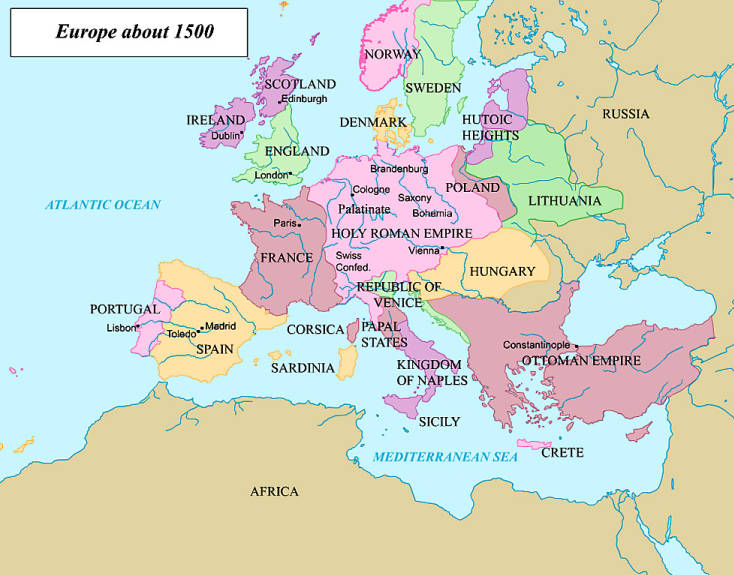 |
| Though borders were constantly changing, Europe looked something like this during Mary's lifetime. |
After leaving Hungary, Mary floated aimlessly until being appointed governor of the Netherlands after the death of Margaret of Austria in 1531. At the time, the Netherlands were a part of the vast and growing Habsburg Empire, ruled by Mary's brother, Charles V. The Netherlands was a notoriously tricky region, populated by a testy and nepotistic nobility, a wealthy and discontented bourgeois, and outer provinces that most definitely did not want to be under Habsburg rule. Add in the ever growing threat of Reformation, and the Netherlands was a hot seat of discontent.
 |
| Not all of Mary's patronages were political in nature. She was a great lover of music, and retained talented musicians and composers at her court. |
She was, however, very tolerant of the protestants in the Netherlands. Charles frequently had to remind her to enforce anti-protestant laws, and the Netherlands was known as a place where protestant missionaries could preach without a huge amount of risk.
It was here in the Netherlands that Mary's master diplomatic and political acumen really shone. The role of governor was chronically underfunded in the Netherlands, and had only a limited number of patronages assigned to it. To control the area Mary needed both money and patronages¹, both of which were controlled by her brother Charles, who was so disinterested in the region, that he left the answering of her letters up to his secretary. Through a combination of persistent pestering and attempted resignations, Mary was able to not only get Charles to answer her letters, but also get him to allow her discretion over the dispensal of every third patronage.
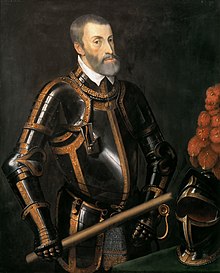 |
| Charles V, Holy Roman Emperor. He was Mary's older brother and nagging boss. |
War was particularly difficult for Mary because her generals refused to listen to or communicate with her. Mary encountered a great deal of misogyny in her capacity as governor and regent, which made her job infinitely more difficult than it would have been for a man. Officials refused to listen to her, and nobles consistently disobeyed her orders. This, along with a great dislike of her nephew Philip (who had just replaced his father), and protest of her age, led to her retirement in 1555
After she left the Netherlands, Mary went to Castille, her mother's homeland. She accompanied her sister Eleanor, intending to spend the rest of her days happy and away from politics. Unfortunately, Eleanor died in 1558, setting Mary adrift. Charles once again offered her governorship of the
Netherlands, and Mary was even persuaded to accept it, but stress over her brother Charles' death caused her to have a sudden heart attack in October of 1558. She died a few weeks later.
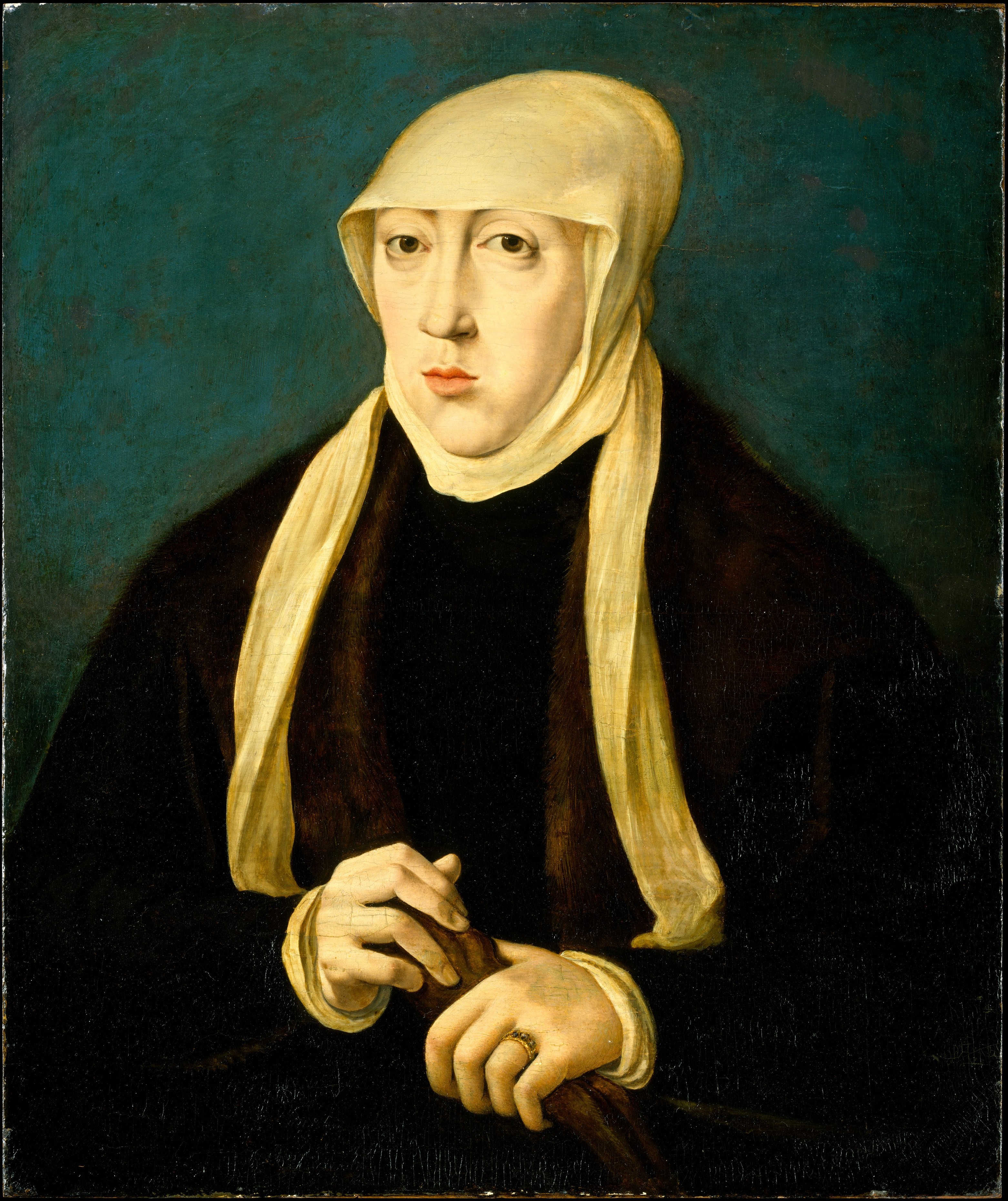 |
| Mary in her older years |
¹A patronage is a job given to members of the nobility to reward good behavior and compel further favor from the monarch or reigning noble. These patronages brought wealth and title, all of which enabled a ruler to bind the nobility to them.
Sources
'En bruit d'estre bonne luteriene': Mary of Hungary (1505-58) and Religious Reform by B. J. Spruyt
The Sinews of Habsburg Governance in the Sixteenth Century: Mary of Hungary and Political Patronage by Daniel R. Doyle
Mary of Hungary-Historical Dictionary of Brussels
Mary of Hungary-Historical Dictionary of the Netherlands
Mary of Austria: "The Heart to do Anything"
Louis II of Hungary

